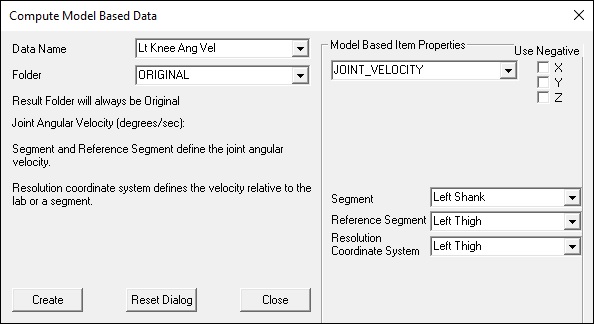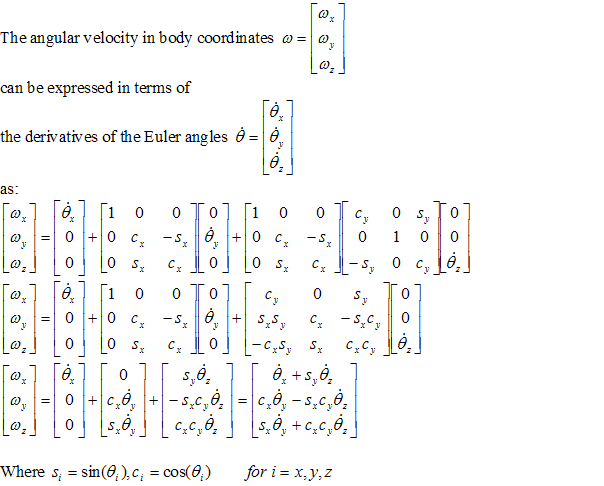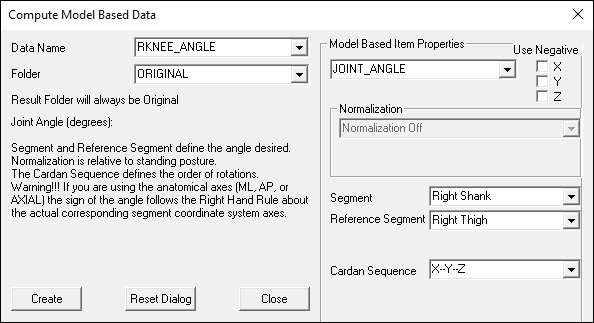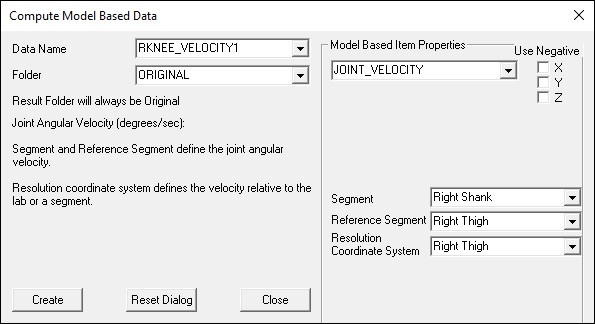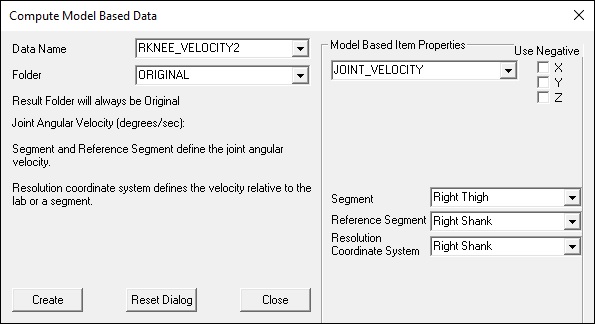Joint Velocity
The joint angular velocity is a vector that describes the relative angular velocity of one segment relative to another segment.
The Joint Angular Velocity can be a bit troublesome to interpret unless you recognize that the signal is not the same as the derivative of the Joint Angle. It is possible that the some terms of the Joint Angular Velocity are not consistent with the derivative of the Joint Angle.
Relationship between the Joint Angular Velocity and the derivative of the Cardan Joint Angles
The Joint Angular Velocity can be a bit troublesome to interpret unless you recognize that the signal is not the same as the derivative of the Joint Angle. It is possible that some terms of the Joint Angular Velocity are not consistent with the derivative of the Joint Angle.
Euler angles are not vectors, so it isn't possible to compute joint angular velocity by taking the first derivative of the joint angles (e.g. Euler/Cardan angles).
With respect to the default Visual3D convention of an XYZ sequence for the Cardan angle, the joint angular velocity can be expressed in Euler angles using the following relationship.
Example - Comparing Joint Angle and Joint Angular Velocity
Joint Angles are typically represented in a Cardan Sequence and Joint Angular Velocities are typically represented as Vectors.
The consequence is that you cannot compare directly all 3 components of the Joint Angle with, what appear to be homologous, components of the Joint Angular Velocity.
Given the following definition of the Right Knee Angle.
and the following definition of the Right Knee Angular Velocity.
only the X-components of the two signals are related (e.g. rotations about the same axis).
If a second angular velocity signal is created as follows:
The Z-components of the second definition and the original joint angle definition can be compared.
Unless the y_component of the joint angle is small, it isn't really possible to compare the Y-components, and if the y component (typically interpreted as ab/adduction is greater than 40 degrees) none of the components are actually comparable.
